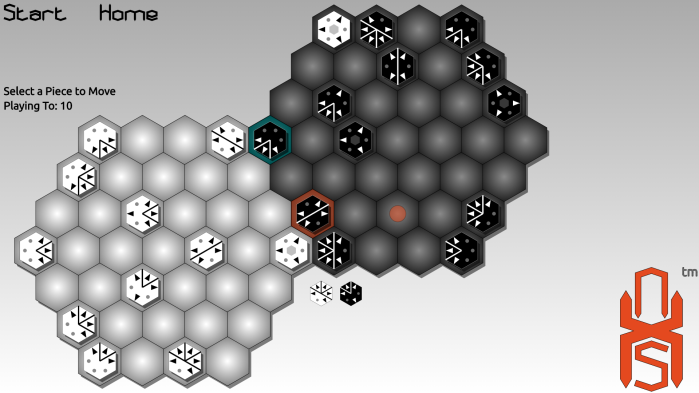In creating NXS, I wanted to create something that would combine the ideas of two armies attacking one another, with the fluid goal of capturing enemy territory.
Obviously, Chess was an influence. I wanted different pieces to have different movement characteristics. One of the few drawbacks of Terrace is that all of your pieces move in the same way. It seemed that the best way to have different “personalities” for each piece was to transfer that complexity from rules to the shape of the pieces (much the way Terrace had transferred it to the shape of the board). Originally I had conceived of hex-shaped pieces with different markings (somewhat like dominoes), but that quickly became the short and tall side pattern you see today.
Being able to move in the direction of the tall side was obvious. Once I decided on that, simple math told me how far they could go (the number of short sides). I felt that that gave each piece a nice balance between maneuverability, power, and speed. Sure, the 5-4 piece is a powerhouse, but it is slow. This also meant either not having a 3-0 piece (too weak), or making it invincible. I chose invincibility, and I really think that piece makes the game much more challenging and interesting than without it.
I choose hexagonal boards mainly because they weren’t squares, and they interlock cleanly. Sounds silly I suppose, but that was really all there was to it. I also liked the idea that each hex had more “liberties” than a square. Six sides rather than four. And although they don’t directly connect, there is no reason you can’t go diagonally out of the corner of a hex (see the capture rules), for 12 total liberties. That diagonal is a knight-like jump, really, but having to jump two intervening spaces influenced how I handled blocking captures (one of my favorite rules). The ability to jump your own piece, but not an enemy piece was inspired by a similar Terrace concept (moving on the same terrace).
Deciding on how to capture territory was more of a challenge. I originally had one big board, but felt that I wanted more than 61 hexes (8 across), and that 9 across was just getting too large. I eventually decided that each player would just have their own board of 37 hexes. This also created the happy side-effect of being able to have three-player games! Each player having their own board also helped me decide on a territory capture strategy influenced by Reversi/Othello. Surround the enemy territory on both sides; either with two pieces, or with a piece and your territory.
Read Part 1

